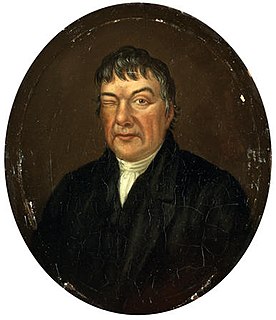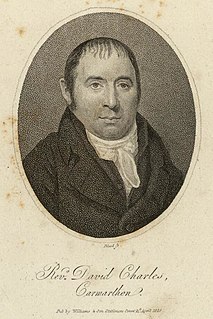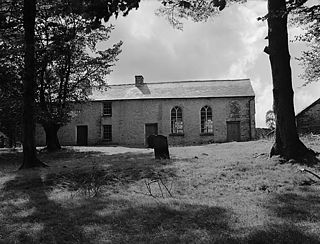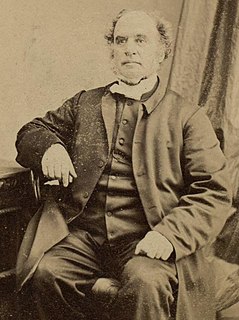
William Williams, Pantycelyn, also known as William Williams, Williams Pantycelyn, and Pantycelyn, is generally regarded as Wales's most famous hymn writer. As a writer of poetry and prose, he is also considered today as one of the great literary figures of Wales. In religious matters he was one of the leaders, along with Howell Harris and Daniel Rowland, of the 18th-century Welsh Methodist revival.

Tywyn, formerly spelled to Towyn, is a town, community, and seaside resort on the Cardigan Bay coast of southern Gwynedd, Wales. It was previously in the historic county of Merionethshire. It is famous as the location of the Cadfan Stone, a stone cross with the earliest known example of written Welsh, and the home of the Talyllyn Railway.

The Presbyterian Church of Wales, also known as Calvinistic Methodist Church, is a denomination of Protestant Christianity in Wales.

The Countess of Huntingdon's Connexion is a small society of evangelical churches, founded in 1783 by Selina Hastings, Countess of Huntingdon, as a result of the Evangelical Revival. For many years it was strongly associated with the Calvinist Methodist movement of George Whitefield.
Calvinistic Methodists were born out of the Methodist Revival in 18th-century Wales and survive as a body of Christians now forming the Presbyterian Church of Wales. Calvinistic Methodism became a major denomination in Wales, growing rapidly in the 19th century, and taking a leadership role in the Welsh Religious Revival of 1904-5.

Christmas Evans was a Welsh Nonconformist minister, regarded as one of the greatest preachers in the history of Wales.

Trecynon is a village near Aberdare situated in the Cynon Valley, in Rhondda Cynon Taf, Wales. It dates from the early nineteenth century and its developed as a result of the opening of the Aberdare Ironworks at Llwydcoed in 1800.

William Thomas, bardic name Islwyn, was a Welsh language poet and Christian clergyman. His best known poems were both called Yr Ystorm ['The Storm'], and were written in response to the sudden death of his fiancee.
John James Williams, commonly known by his bardic name of "J.J.", was a Welsh poet and served as Archdruid of the National Eisteddfod of Wales from 1936 to 1939.

David Charles, was a Welsh hymn-writer.

Soar-y-mynydd or Soar y mynydd is a Calvinist Methodist chapel near the eastern extremity of the large parish of Llanddewi Brefi, Ceredigion. Its often-repeated claim to fame is that it is the remotest chapel in all Wales. Its name is Welsh for ‘Zoar of the mountain’. Zoar or its Welsh equivalent Soar is a not uncommon chapel name in Wales which derives from the mention in Genesis 19:20–30 of the place which served as a sanctuary for Lot and his daughters and which was spared by God when the cities of Sodom and Gomorrah were destroyed.

Morganstown is a part of the community of Radyr and Morganstown in the north of Cardiff, just over 5 miles (8 km) northwest of Cardiff city centre and separated from Radyr to the south by the M4 motorway. It elects four councillors to the Radyr and Morganstown community council.
Dilys Grace Edmunds (1879–1926), an early twentieth century teacher in India from a Welsh Calvinistic Methodist background, whose fund-raising work supported school building programmes in the Karimanj District of India.

Richard Owen was a Welsh Calvinistic Methodist minister and preacher.

Roger Edwards D.D. was a Welsh Calvinistic Methodist, who later became prominent in Wales as a press editor and publisher.

Bethel Strict Baptist Chapel is a former place of worship for Strict Baptists in Robertsbridge, a village in the district of Rother in the English county of East Sussex. Partly hidden behind ancient buildings on the village High Street, the simple brick chapel was erected in 1842 on the initiative of James Weller, a "somewhat remarkable man" whose preaching had attracted large audiences across Kent and East Sussex in the previous decade. The Strict Baptist cause was historically strong in East Sussex, and Protestant Nonconformism thrived in Robertsbridge, which was distant from the nearest Anglican parish church. The chapel closed in about 1999 and permission was granted for its conversion into a house. English Heritage has designated it a Grade II Listed building.
Nonconformity was a major religious movement in Wales from the 18th to the 20th centuries. The Welsh Methodist revival of the 18th century was one of the most significant religious and social movements in the history of Wales. The revival began within the Church of England in Wales, partly as a reaction to the neglect generally felt in Wales at the hands of absentee bishops and clergy. For two generations from the 1730s onwards the main Methodist leaders such as Howell Harris, Daniel Rowland and William Williams Pantycelyn remained within the Church of England, but the Welsh revival differed from the Methodist revival in England in that its theology was Calvinist rather than Arminian. Methodists in Wales gradually built up their own networks, structures, and even meeting houses, which led, at the instigation of Thomas Charles, to the secession of 1811 and the formal establishment of the Calvinistic Methodist Presbyterian Church of Wales in 1823.
Ebenezer, Trecynon is an Independent (Congregationalist) chapel in Ebenezer Street, Trecynon, Aberdare, Wales. It was one of the earliest Independent chapels in the Cynon Valley and remained an active place of worship until 2009.
Bethel, Ynysybwl was a Calvinistic Methodist chapel in Rock Terrace, Ynysybwl, Glamorgan, Wales.
Capel Heol Dŵr was a Calvanistic Methodist chapel in the town of Carmarthen, Carmarthenshire, Wales. The building dates from 1831 and is located at Water St, Carmarthen. It was designated as a Grade II listed building on 19 May 1981.















